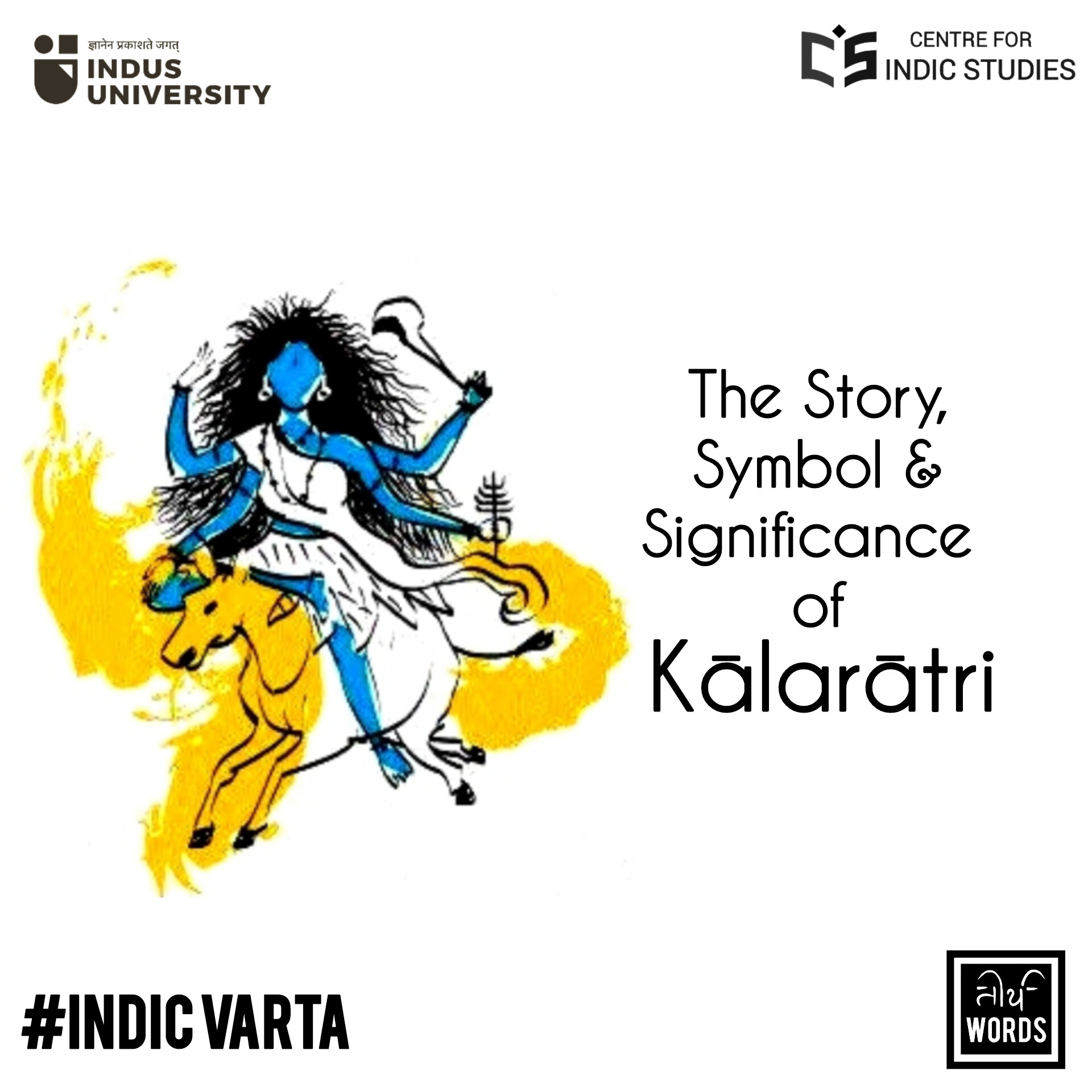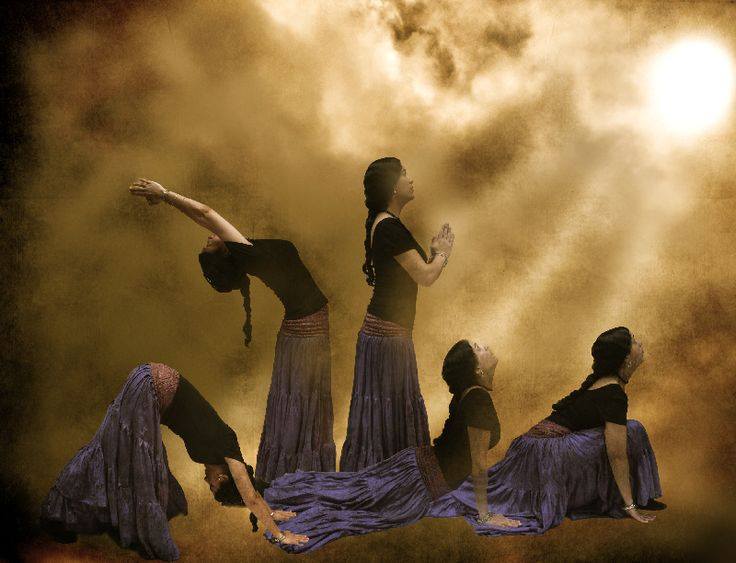- Visitor:157
- Published on: 2024-10-09 02:48 pm
The Story, Symbol, and Significance of Kālarātri
Imagine how a mother reacts when her children are endangered by malignant people! She becomes scornfully cruel to the miscreants. Such is Kālarātri too, for her dreadful acts are protective measures to safeguard her children!

Story
Whereas Kātyāyanī incarnates as a dolly daughter, Kālarātri personifies death and destruction. If a woman can be as cordial as a daughter, she can also be as horrendous as death as well. If she can embody the warmth and kindness of a caregiver, she can also possess the capacity for profound darkness. Just as she can bring joy and comfort, she can also exhibit a chilling ferocity.
The complexion of Kālarātri is charcoalite black and she is utterly naked. Her long tousled hairs are spookily upped and three glaring eyes protrude her face. She has a macabre smile on her lips as she breathes fire through her nostrils. Deadly insects like scorpions and cankerworms roam around her body and a garland of skulls adorn her breasts. She has four hands, the two on the left holding a spiky sabre and a kharga and the two on the right showing abhayamudrā and varadāmudrā, gesturing reassurance of safety and the promise of boons.
Kālarātri emerged out of the divine body of Ādiśaktī, the universal feminine, as the most fatalistic and pernicious form of womanhood when the devil named Raktabīja became too insolent and mocked the delicate nature of the goddess. As the devil was promised of regeneration and multiplication from the drops of his blood, he was almost invincible. The moment he was slain or hurt and the blood drops from his body fell on the ground, not only was he rejuvenated but he also appeared with as many figures as the fallen blood drops. Kālarātri slaughtered the devil by decapitating his head and drinking off the stream of blood flowing from the headless body, repelling any chance of his blood being spilled on the ground. Thus, the devil could no longer regroup and multiply, and hence was doomed.
Symbol
The story of Kālarātri serves as a profound exploration of the dualities within femininity, illustrating how a woman can embody both nurturing warmth and fearsome power. The imagery of her being adorned with skulls and surrounded by deadly insects reflects a raw, untamed force that transcends traditional boundaries. With four hands—two wielding weapons and two offering reassurance—she embodies the balance between threat and protection, illustrating that strength can manifest in various forms. This duality is crucial as it acknowledges that to protect what is cherished, one may need to confront and destroy threats, no matter how daunting.
Kālarātri's emergence from Ādiśaktī during the battle with Raktabīja signifies the awakening of a powerful, unyielding force in response to evil. In essence, she serves as a powerful reminder of the complex interplay between destruction and preservation. She illustrates that while life can be filled with joy and comfort, it is also intertwined with danger and the necessity of fierce action.
The figure of Kālarātri is fierce and harrowing. But she inspires awe only to the wicked and sinful, not to the virtuous and devoted. To the latter, she bestows peace, protection, and pleasantries. As a matter of fact, her awful persona is actually very gratifying to the holy and the pious as she is a protecting mother. Imagine how a mother reacts when her children are endangered by malignant people! She becomes scornfully cruel to the miscreants. Such is Kālarātri too, for her dreadful acts are protective measures to safeguard her children!
Significance
Worshipping Kālarātri offers numerous benefits, especially in the spiritual, emotional, and practical aspects. As a fierce form of the divine feminine, she represents the destruction of negativity and the removal of obstacles. So, worshipping her is particularly beneficial for those facing challenges in their lives. Devotees seek her blessings for safety and protection from malevolent forces, both physical and spiritual. Kālarātri is believed to ward off evil energies and provide a shield against harm. Invoking Kālarātri empowers individuals to confront their fears and challenges. Her fierce nature inspires resilience, encouraging followers to take bold actions in the face of adversity. Worshipping her can facilitate the resolution of personal or professional problems. Her devotees often experience a sense of peace and assurance, feeling the goddess’s presence in their lives, which can lead to greater overall well-being and fulfilment. In essence, worshipping Kālarātri serves as a powerful tool for empowerment, protection, and spiritual development. So, you may pray to her on the seventh day of the Navarātri by chanting:
ॐ एकवेणी जपाकर्णपूरा नग्ना खरास्थिता
लम्बोष्टी कर्णिकाकर्णी तैलाभ्यक्तशरीरिणी।
वामपादोल्लसल्लोहलताकण्टकभूषणा
वर्धनमूर्धध्वजा कृष्णा कालरात्रिर्भयंकरी ॥
या देवी सर्वभूतेषु माँ कालरात्रि रूपेण संस्थिता।
नमस्तस्यै नमस्तस्यै नमस्तस्यै नमो नमः ।।
॥ ॐ देवी कालरात्र्यै नम: ॥
- 78 min read
- 2
- 0










